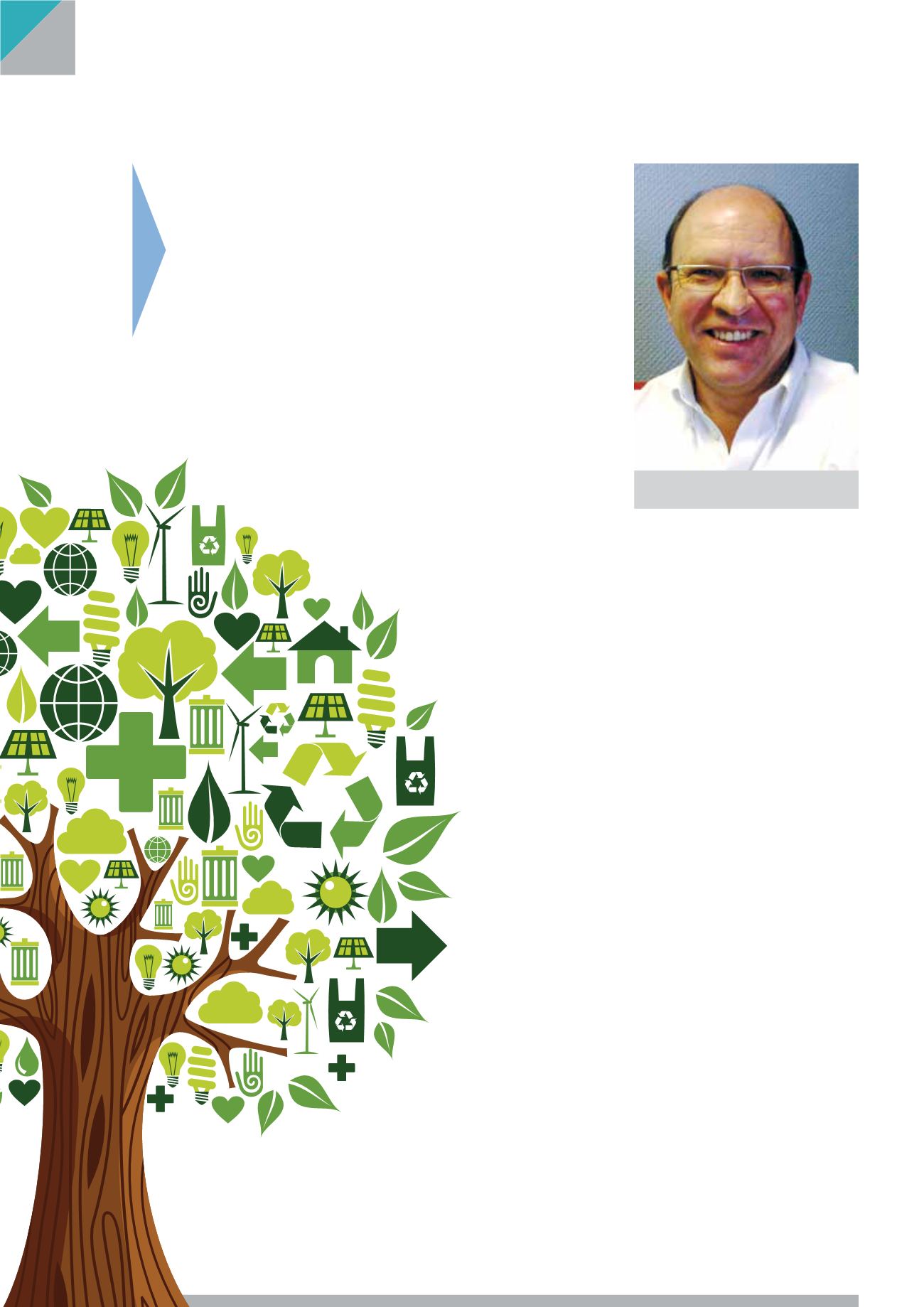
“Many health and safety incidents are based
on systemic failures that took place long before the
particular accident that causes the harm.”
In the quest to achieve ‘zero
harm’, Wits University’s Centre
for Sustainability in Mining
and Industry, (CSMI) offers
a course that will enable
leaders across industries to
better affect the behaviour of
everyone in their organisations.
Business culture can change behaviour
marketplace
THE KEY, SAYS CSMI
director Professor
May Hermanus, is to equip leaders with a
holistic picture of how their organisation’s
culture and systems make people behave,
and to look beyond the ‘blame game’ when
Professor Kobus de Jager – CSMI strategic
associate and presenter of the course.
trying to prevent accidents or failures.
The course – titled 'Occupational Health
& Safety Leadership and Human Factors' –
will open the eyes of high level managers
to the systemic failures which organisations,
which create the‘error traps’where accidents
become inevitable.
“What the Human Factors focus in the
course does is to look at people in context
– inside and outside the workplace – and
unpack how we understand human error,”
says Professor Hermanus.
“We help course participants to under-
stand what people bring to organisations
– in terms of the daily innovations crucial to
being productive. We all know that people
are fallible, but we often do not recognise
the inherent value of people’s daily decisions
to deal with the unexpected; without this
personal initiative, most organisations would
grind to a halt.”
The problemoccurs when these decisions
gowrong –wheremisjudgements take place
that lead to accidents.
“Many health and safety incidents are
based on systemic failures that took place
long before the particular accident that
causes the harm,”says Professor Kobus
de Jager, CSMI strategic associ-
ate and presenter of the course.
“So we have designed a course
that will take participants
through the interdependen-
cies of their health and safety
systems so they have a bet-
ter understanding of cause
and effect.”
Part of the course aims
at understanding how
leaders can anticipate
problems, and also how
they respond to them.
“Human beings and
systems are not perfect,”
says Professor Hermanus.
“They evolve and change
as different pressures act
on them, as processes and
procedures change. The
‘blaming’ response is often
counter-productive if it does
not help in resolving the issue
in the long run.”
Underlying this approach is
the need to create an enabling cul-
ture that will allow the organisation to
evolve in the right direction – towards
safer practices and attitudes.
“Culture describes the behaviour of peo-
plewithin an organisation, and a constructive
culture must be driven by leadership,” says
Professor De Jager. “The course guides par-
ticipants on how to integrate organisational
culture and systems to achieve the most
positive behaviour.”
The course recognises that most health
and safety practitioners are focused in one
of the many areas of specialisation, such
as occupational hygiene, safety or even
industrial relations. As such, they may not be
equipped to take a broad and inclusive view
of their role when they are promoted to a
leadership position.
“When people become leaders, it is vital
that they give leadership to the holistic pro-
gramme of that organisation,”says Professor
Hermanus. “To do this effectively, they need
to understand how the various elements fit
together, and that is something that they
may not be formally prepared for.This course
fills that gap.”
She emphasised that leaders signal what
is important and what matters in organisa-
tions, and also allocate the resources that
get made available.They alsomake decisions
about which programmes andwhich systems
are going to be the most effective, so their
role is pivotal in enabling health and safety.
“Looking at the outcomes of health and
safety performance of different companies,
it is those companies who have prioritised
health and safety at a leadership level that
are making strides,” she says. “They are able
to shape theway that their organisation oper-
ates on a strong foundation of good health
and safety practice.”
The course will be presented in Septem-
ber 2013, and runs over the duration of a
week. It can also be incorporated into post-
graduate qualifications in the Wits School of
Mining Engineering.
For more information, email Rieta Ganas
on
.
●
June 2013
CONSTRUCTION WORLD
4


